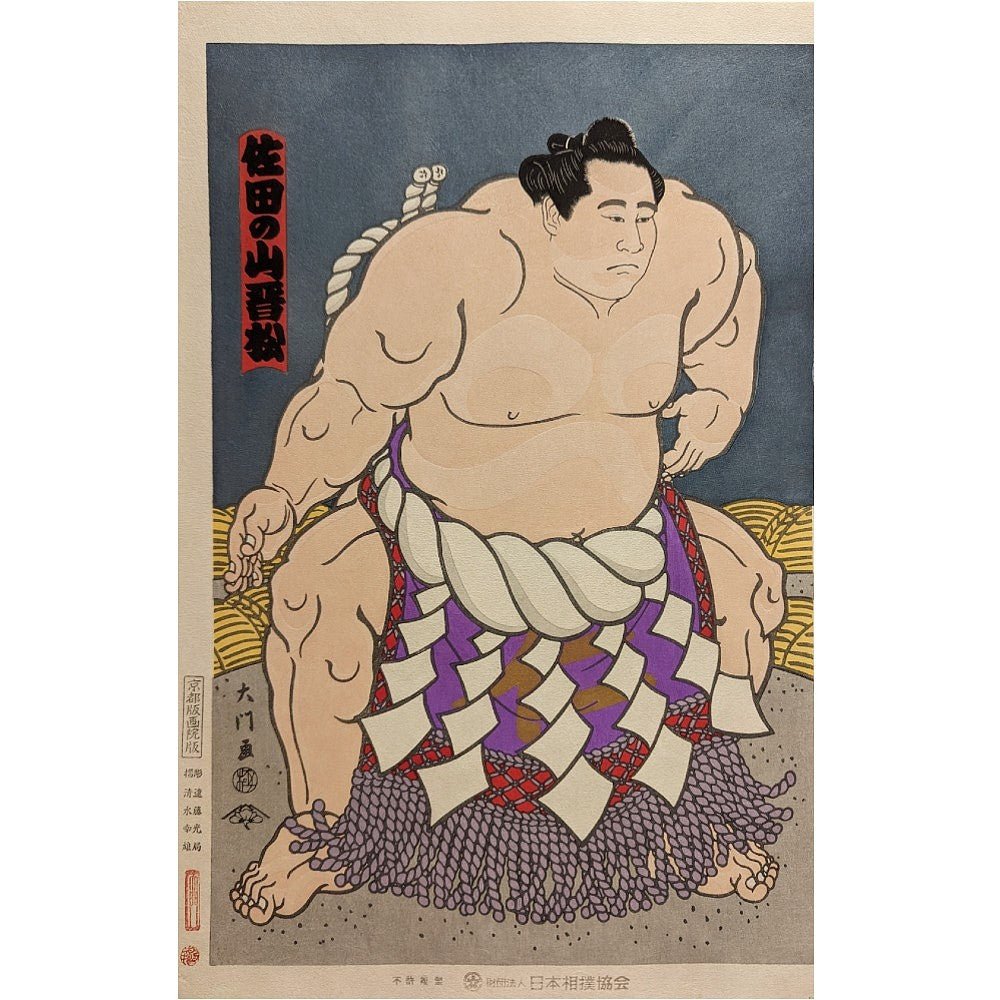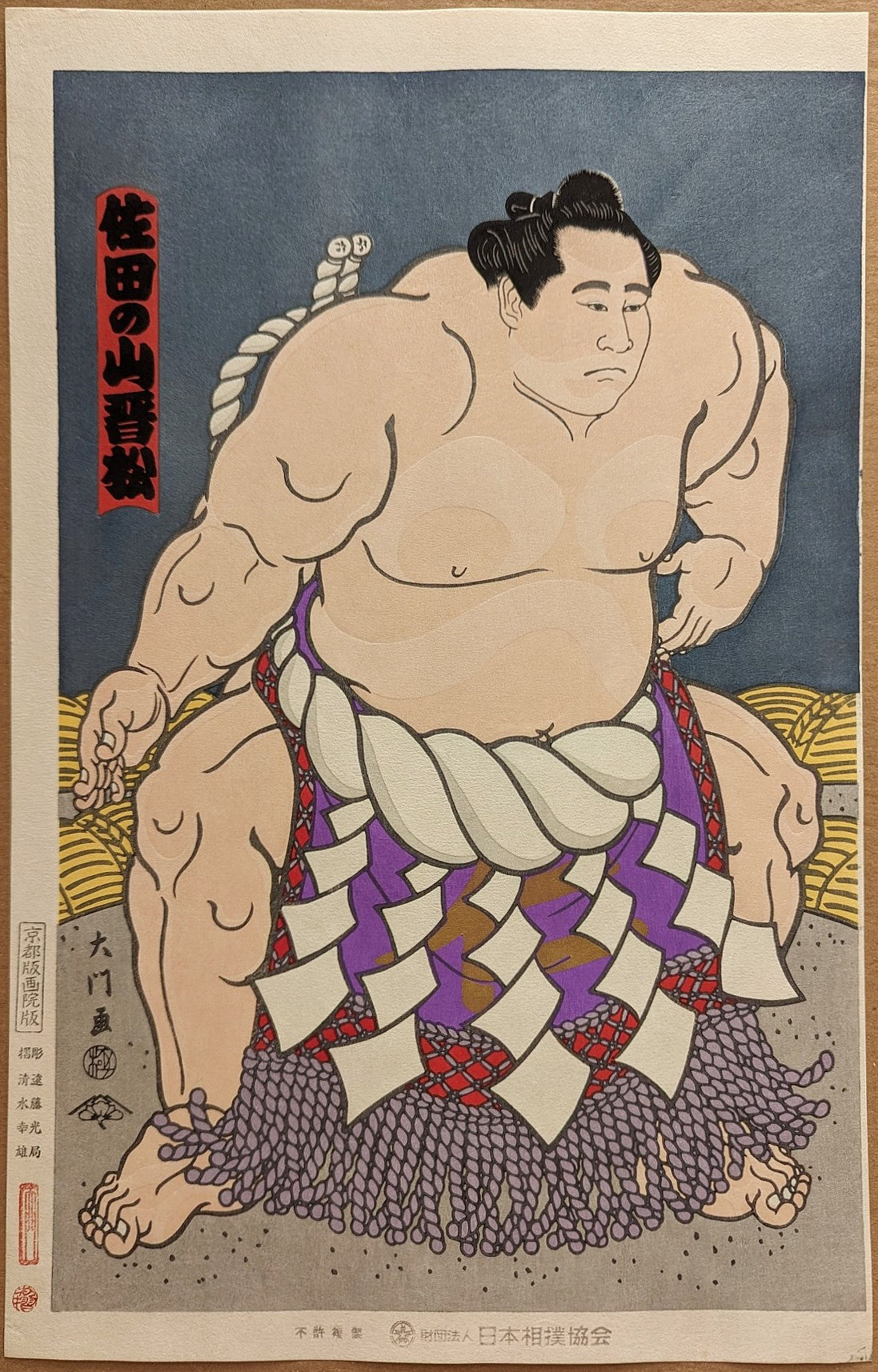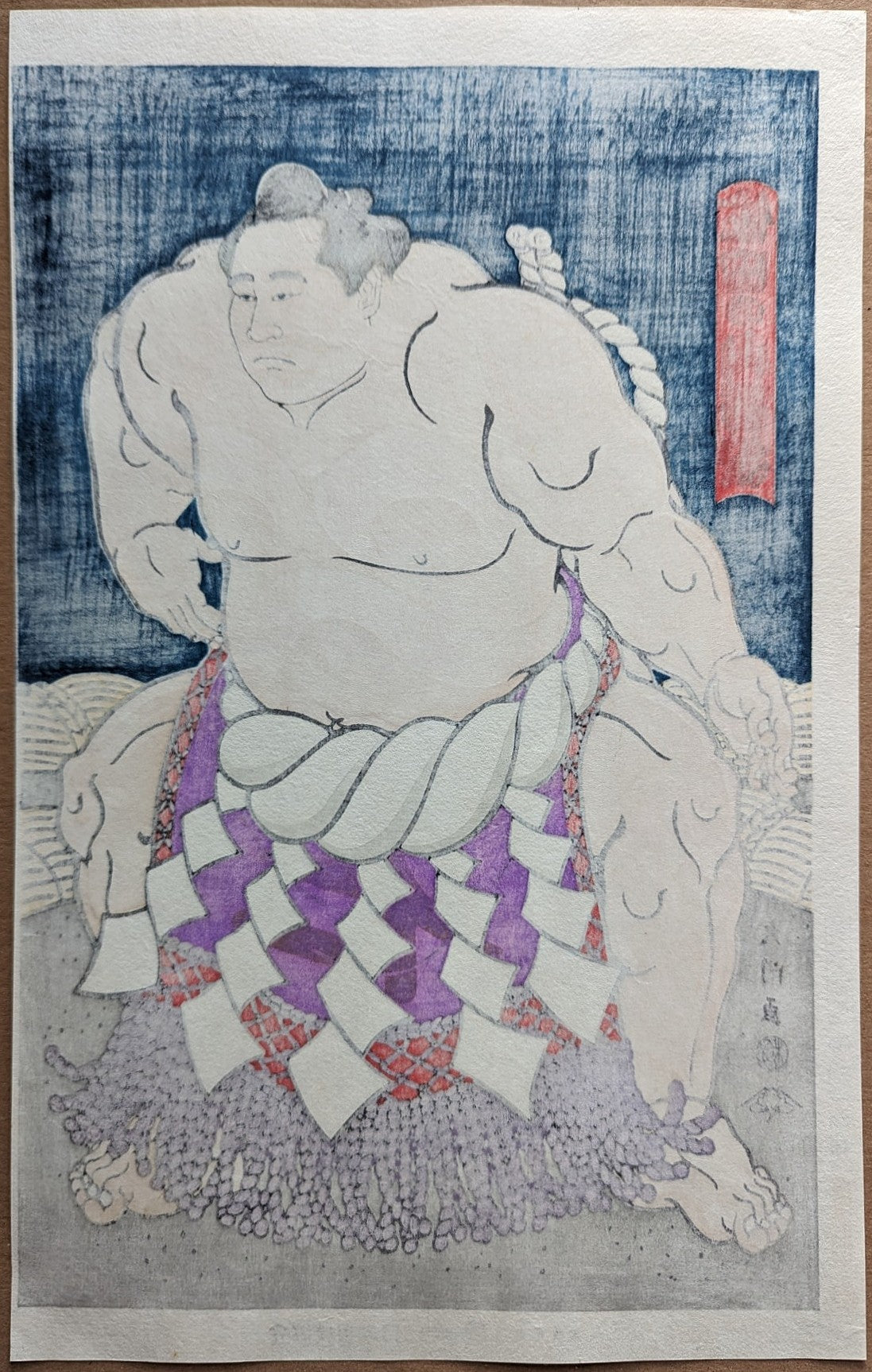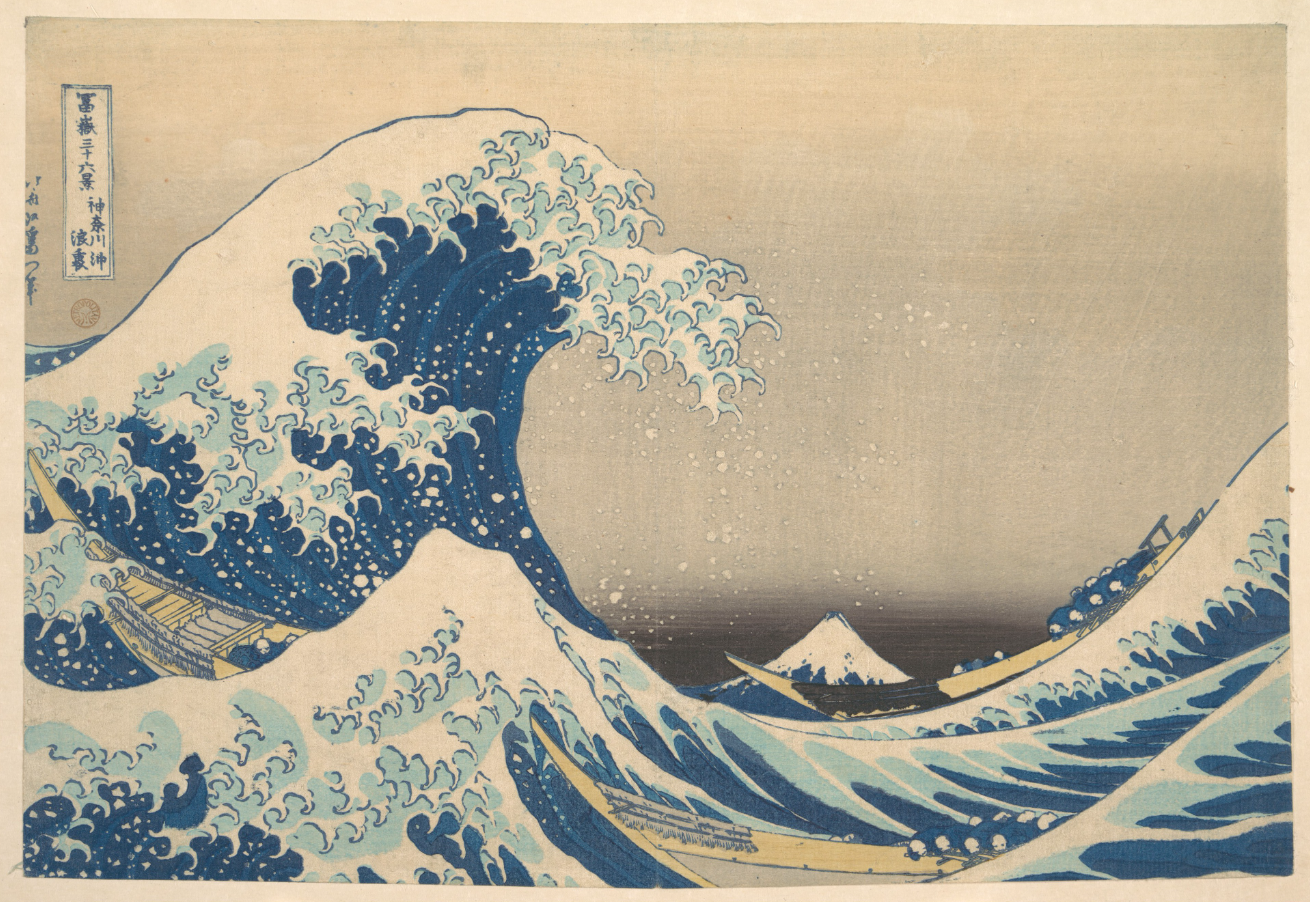



Daimon Kinoshita - 横綱佐田の山土俵入り (Yokozuna Sadanoyama Shinmatsu Ring-Entering Ceremony)
A fabulous woodblock print by Daimon Kinoshita: 横綱佐田の山土俵入り (Yokozuna Sadanoyama Shinmatsu Ring-Entering Ceremony). The 50th Yokozuna is shown in his imposing dohyō-iri (土俵入り) stance, body lowered and fists firm. A striking piece echoing the traditions of Edo-period nishiki-e while emphasising the power and dignity of the Yokozuna. 🏯💪
- Year & Edition: 1985 onward · Published by 京都版画院 (Kyoto Hanga-In). Carved by 遠藤 (Endo). Printed by 清水 (Shimizu). Margin inscriptions include “不許按製” (rights), 財団法人 日本相撲協会 (Japan Sumo Association), and copyright seals, with Kinoshita’s “Daimon” and edition seals below.
- Medium: Woodblock.
- Dimensions: Sheet W: 27.00 cm × H: 41.00 cm.
- Condition: Wonderfully stored; strong, beautiful colours, paper crisp & intact.
- Notes: Sadanoyama Shinmatsu (佐田の山晋松, 1938–2017) became the 50th Yokozuna in 1965, competing in an era of great rivals such as Taiho Koki (大鵬幸喜) and Kashiwado Tsuyoshi (柏戸剛). Known for his tsuppari thrusting style, alongside oshidashi, tsukidashi, yorikiri, and uwatenage techniques, he was a versatile and respected rikishi. Later serving as chairman of the Japan Sumo Association (日本相撲協会) in 1992, Sadanoyama also famously appeared in the 1967 James Bond film You Only Live Twice. Daimon Kinoshita comments on his website (www.daimon-e.sakura.ne.jp): 「第50代横綱。」(50th Yokozuna).
About the Artist
Born in Hokkaidō in 1946, Daimon Kinoshita is Japan’s foremost contemporary artist of sumo nishiki-e (錦絵). Since 1985 he has worked closely with the Japan Sumo Association, using authentic Edo-period ukiyo-e techniques and the traditional hanmoto system of artist, carver, and printer. His woodblock prints bring Yokozuna, Ōzeki, and rikishi to life in bold ceremonial portraits, often depicting the dohyō-iri (土俵入り) ring-entrance with mica (kirazuri) details that echo Edo traditions. Sold at the Kokugikan arena and presented to visiting dignitaries, Kinoshita’s works combine beauty, craft, and cultural significance, keeping the art of nishiki-e alive in the modern age. [ ← View All Works by Daimon Kinoshita]
Choose options


